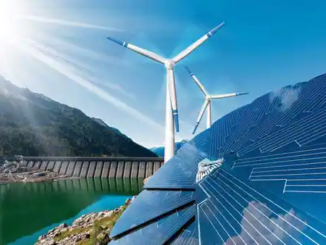
The world has made firm progress in the rollout of renewables in the year since the 26th UN Climate Change Conference in Glasgow, the Energy Transitions Commission said in its latest report, but it flagged serious shortcomings in tackling methane emissions, and ending coal-fired generation and deforestation.
A rapid rollout in renewables and electric vehicles, along with substantial progress towards decarbonizing heavy industry, has not been enough to offset slow progress in other areas ahead of COP27 that starts in Egypt on Nov. 6, the ETC said in the report, “Degree of Urgency: Keeping 1.5C on the Table,” published Nov. 2.
“Progress is urgently required in reducing methane emissions, early coal phase-out and ending deforestation,” ETC Deputy Director Mike Hemsley said in a statement.
The report identified a need to close the “ambition gap” via more ambitious country targets with strengthened Nationally Determined Contributions.
The ETC also called for targeted policies and company actions to “drive real-world progress” across the six critical sectors it identified to close the “implementation gap.” These are methane, deforestation, power systems, road transport, heavy industry and energy efficiency.
In addition, at least $300 billion a year is needed to close the “financing gap” to support early coal phase-out, end deforestation and boost CO2 removals.
The ETC said this funding should come from corporates in voluntary carbon markets, as well as philanthropic capital, hybrid payment and investment instruments, as well as funding from developed countries.
Platts, part of S&P Global Commodity Insights, assessed carbon removal-based credits for the current year at $14.20/mt CO2 equivalent Nov. 1, down from a peak of $22.10/mt CO2e on Feb. 1.
“Despite the current global economic and political challenges, we must keep focused on the global crises presented by climate change,” ETC Chair Adair Turner said in the statement. “Each 0.1 C rise above 1.5 C will have a hugely significant impact,” noting increased energy security could also drive a faster transition.
Cause for hope
The ETC flagged several areas in which progress had been made in the year since COP26.
Despite limited additional commitments in NDCs, public policy progress around the world increased the likelihood of meeting existing pledges.
China’s renewables rollout could see carbon emissions peak well ahead of its target of 2030, with a potential overshoot by 500 GW of its installed solar and wind capacity target of 1,200 GW.
The ETC also noted the EU’s RePowerEU package in response to Russia’s invasion of Ukraine was driving increased renewables and hydrogen ambition.
The Inflation Reduction Act in the US committing $369 billion to energy transition and climate change contained significant policy advancements for scaling up renewables, green hydrogen and carbon capture, utilization and storage, it added.
In industry, the ETC said around 50 low-carbon steel plants needed to come online by 2030 to meet emissions reduction targets. It has identified 45 such projects that could be operating by this date, and noted that two had taken final investment decisions.
Rapidly closing window
However, on coal, the war in Ukraine had driven a short-term rise in emissions and increased reliance on the fuel.
There was “therefore no clear sign that coal phase-out is proceeding at the rate implied by even the modest commitments made at COP26,” it said.
The UN Environment Programme said Oct. 27 that there was “no credible pathway” to limiting global temperature rises to 1.5 C above pre-industrial levels, in its latest Emissions Gap Report.
Instead, the global temperature is on course to rise by 2.8 C by 2100 under current policies, while implementation of current pledges will only limit the rise to 2.4-2.6 C.
The International Energy Agency was much more optimistic in its assessment on Oct. 27, saying under its central Announced Pledges scenario, CO2 emissions were on course to peak in the mid‐2020s and fall to around 12 gigatons in 2050.
“The projected global median temperature rise in 2100 is about 1.7 C,” the IEA said. “This gets close to achieving the goal of the Paris Agreement to limit the temperature rise to ‘well below 2 C,’ and it marks the first time that collective government targets and pledges have been sufficient, if delivered in full and on time, to hold global warming to below 2 C.”
S&P Global forecasts global peak emissions from the combustion of fossil fuels to occur in 2028 at 35.886 gigatons under the Reference Case in its Global Integrated Energy Model.



